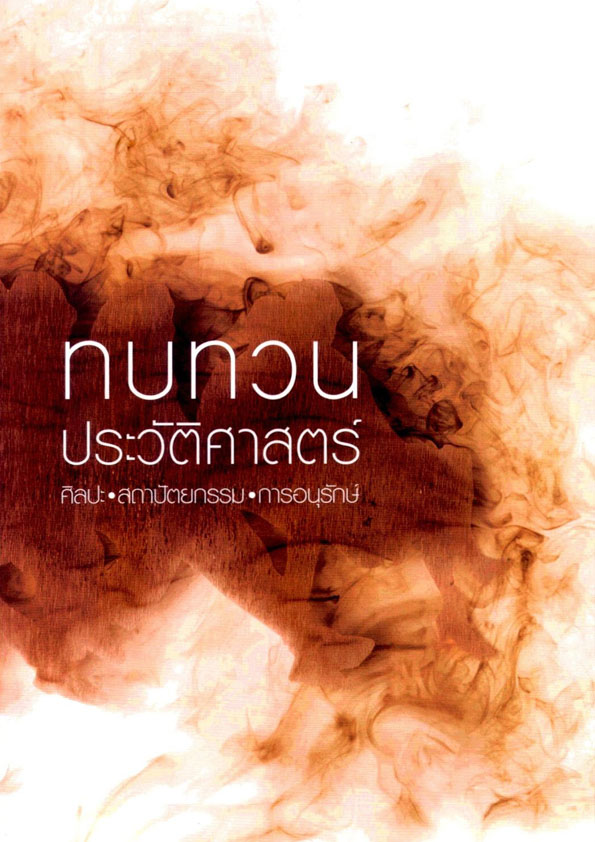ความเชื่อที่เกี่ยวข้องกับเคหะสถานและศาสนสถานของชาวอีสาน : ภาพรวมและกรณีศึกษาภาคอีสานตอนกลาง Beliefs on Dwelling and religious Places : Case Studies in Central Isan
Main Article Content
Abstract
บทคัดย่อ
บทความนี้ผู้เขียนใช้วิธีมองย้อนกลับไปสู่ฐานทางวัฒนธรรมความเชื่อของชาวอีสานที่มีนัยยะสำคัญต่อการกำหนดรูปแบบเคหะสถานและศาสนสถาน ผลการศึกษาค้นคว้าสรุปได้ว่าวัฒนธรรมความเชื่อของชาวอีสานสะท้อนให้เห็นถึงโลกทัศน์ในด้านต่างๆ โดยเฉพาะเรื่องฐานะและระบบความสัมพันธ์ของคนในสังคม กับเรื่องที่ต่ำที่สูง นอกจากนี้ยังมีความเชื่อหลักที่เกี่ยวกับการใช้พื้นที่อาคาร ได้แก่เรื่อง การล้างเท้าก่อนเข้าสู่พื้นที่ภายใน เรื่องการห้ามขวางประตู-บันได เรื่องทิศอัปมงคล ตลอดจนเรื่องพฤติกรรมการเดินบนเรือนและศาสนสถาน เป็นต้น โดยสามารถจำแนกวัฒนธรรมความเชื่อตามองค์ประกอบของอาคารออกเป็น พื้นอาคาร (ห้ามเดินลากเท้าหรือกระทืบเท้า ก็เพื่อมิให้ส่งเสียงดังรบกวนผู้อื่น), หน้าต่าง (ห้ามคนเรือนอื่นเปิดหรือปิดหน้าต่างเรือนของตน เนื่องจากเป็นพื้นที่ส่วนตัว และอาจเกิดอันตรายขณะเปิด-ปิดได้), ประตู (ห้ามนั่ง-นอน-ยืนขวางประตู เพื่อมิให้เป็นการขัดขวางผู้อื่นในการเข้า-ออก), บันได (ห้ามยืนหรือนั่งบนขั้นบันได ห้ามนั่งหรือนอนขวางบันได ห้ามเอาเท้าเหยียบหรือเช็ดหัวบันได ห้ามเดินข้ามขั้นบันได เพื่อมิให้ขวางผู้อื่นและป้องกันมิให้เกิดอุบัติเหตุขณะขึ้น-ลง), ชาน/ระเบียง (ห้ามนั่งห้อยขาหรือไกวขาไปมาเนื่องจากอาจมีคนอยู่ที่ใต้ถุน), ขื่อ (ห้ามนอนตรงขื่อหรือใต้ขื่อ เพื่อความปลอดภัยในกรณีที่โครงสร้างชำรุดผุพัง)
ส่วนวัฒนธรรมความเชื่อที่มีผลโดยตรงหรือเป็นข้อกำหนดรูปแบบของเคหะสถานและศาสนสถานก็มี ตั้งแต่ทิศทางการวางผังอาคารซึ่งไม่ให้หันไปทิศตะวันตกและการไม่ปลูกเรือนขวางตะวัน ซึ่งสอดคล้องกับทิศทางของแดดและตรงกับหลักการออกแบบอาคารทั่วไป เรื่องทำเลที่ตั้งต้องห้ามต่างๆ ที่มีเหตุผลเรื่องชัยภูมิและสภาพดิน รวมถึงเรื่องลักษณะไม้ที่เป็นมงคลและไม่เป็นมงคลซึ่งเป็นเรื่องความแข็งแรงและความเหมาะสมของไม้ นอกจากนี้รูปแบบเรือนของกิจกรรมหรือพิธีกรรมที่เกี่ยวเนื่องกับความเชื่อ ก็เป็นตัวกำหนดขนาดและลักษณะของพื้นที่ที่รองรับกิจกรรมนั้นๆ ส่วนพื้นที่ใช้สอยในบ้านเรือนแต่ละหลังก็จะประกอบไปด้วยพื้นที่ขนาดต่างๆ ได้แก่ ห้องลูกสาวกับลูกเขย ห้องลูกชายกับลูกสะใภ้ ห้องสำหรับพระสงฆ์มาเทศนา ห้องนอนพ่อแม่ ห้องสำหรับแขกผู้มาเยือน ห้องลูกหลานเหลน ห้องเก็บเงินเก็บทอง และห้องนอนลูกสาวคนเล็ก นอกจากนี้ยังมีตำราที่ว่าด้วยการสร้างเรือน ซึ่งมีรายละเอียดตั้งแต่การเลือกไม้ การลงเสาแฮก (แรก) เสาขวน (ขวัญ) การทำพิธีสู่ขวัญขึ้นเรือนใหม่ เป็นต้น ผู้เขียนเห็นว่าความเชื่อในส่วนที่มีเหตุผลสามารถนำมาปรับใช้ให้สอดคล้องและเหมาะสมกับวิถีชีวิตในปัจจุบันได้
Abstract
The article aims to look at cultural beliefs of people in Isan, northeastern Thailand, which influence their dwelling and religious architecture. The study found that cultural beliefs of the Isan reflect their worldviews, in particular on status ; social system ; a pair of opposite, low and high ; inauspicious directions and use of space and behavior, such as washing feet before entering a building ; not blocking doors and staircase ; and well behaving while walking on dwelling and religious places. Cultural beliefs are also associated with house’s elements, such as flooring, windows, doors, staircase, verandah, and crossbeam. The belief are, for example not trampling over the floor or walking with round noise to disturb others ; not allowing outsiders open or close windows of one’s house, a private area ; not sitting, lying, and standing in front of doors to obstruct entering and exiting ; not standing or sitting on steps of a staircase, nor sitting or lying in front of a staircase, nor wiping the first staircase’s pillar, nor crossing a flight of steps to block the others and to prevent accidents ; not sitting on verandah with legs hanging or swinging as there are people on the lower floor ; and not sleeping beneath a crossbeam as roof structure may collapse.
Dwelling and religious places are affected by cultural beliefs on building directions, locations, material used, and ceremonies. Building should not face to the west and be laid against the path of the sun. Location of a building is concerned about fortunate grounds and land condition. Material used, namely auspicious and in auspicious timbers are determined by strength and suitability for house construction. Ceremonies and activities of dwellers determine space, functional areas, and characteristics. A house of the Isan comprises rooms for parents ; daughters and sons in law ; sons and daughters in law ; youngest daughter ; grandsons and granddaughters ; and guests ; as well as a place for monks to give a sermon and storage for money and gold. A book of house construction provides information on methods of selecting timbers, planting the first and second pillars, and holding su-kwan ceremony.
